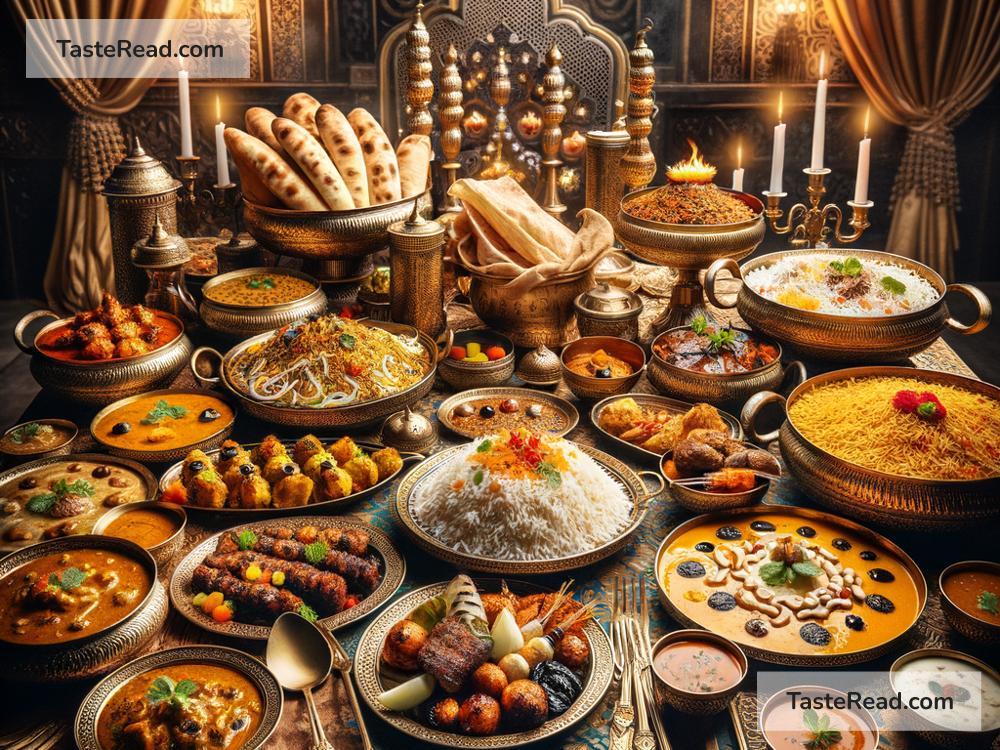Celebrating the Tradition of Mughlai Feasts in India
India is a country rich in culture, history, and traditions, and one of its most cherished legacies is its delicious food. Among the variety of cuisines that continue to be loved and celebrated across the nation, Mughlai cuisine holds a special place. It is not just food—it’s a journey through history, royalty, and a combination of flavors that can enchant anyone. Mughlai feasts have long been a symbol of celebration, and even today, they are an important part of Indian festivals, weddings, and family gatherings.
The Origins of Mughlai Cuisine
Mughlai cuisine finds its roots in the kitchens of the Mughal Empire, which ruled large parts of India from the early 16th century until the mid-19th century. The Mughals brought their culinary traditions from Persia, Central Asia, and the Middle East and combined them with Indian spices and cooking methods. This fusion resulted in a rich and flavorful cuisine that was fit for royalty but slowly made its way into the hearts of common people.
The Mughals adored food and believed it was an art form. Their royal chefs—known as khansamas—experimented with complex flavors, slow cooking techniques, and luxurious ingredients like dry fruits, saffron, and nuts. Mughlai dishes were not just about taste; they were designed to be visually beautiful, aromatic, and fulfilling. Over time, these royal recipes became part of India’s food culture and are still enjoyed during special occasions.
What Makes Mughlai Feasts Special?
A Mughlai feast is more than just a meal. It’s an experience of indulgence, where every dish is cooked with care, patience, and a touch of grandeur. Several characteristics make Mughlai food unique:
-
Richness and Flavor: Mughlai dishes are known for their creamy, spicy, and aromatic flavors. Ingredients like ghee (clarified butter), cream, cashews, and almonds add richness to the food.
-
Use of Spices: Mughlai cuisine uses a blend of spices such as cardamom, cloves, mace, nutmeg, cinnamon, and saffron to create depth and complexity. The spices are balanced to ensure they enhance the dish without overpowering it.
-
Slow Cooking Techniques: Many Mughlai dishes, such as biryani, nihari, and qorma, are prepared using the dum method—a slow cooking technique where food is cooked on low heat in a sealed container to preserve its flavors.
-
Elegance in Presentation: Mughlai food is often plated beautifully, garnished with herbs, silver leaves (known as vark), or fried onions, making it a feast for the eyes as well as the palate.
Celebrating with Mughlai Food
In India, Mughlai feasts are an integral part of celebrations and gatherings. Be it weddings, festive occasions, or family reunions, Mughlai dishes take center stage. Let’s explore some of the most popular Mughlai dishes that are often part of these celebratory meals:
-
Biryani: The star of every Mughlai feast is undoubtedly biryani, a fragrant rice dish cooked with marinated meat or vegetables, spices, and saffron. There are many regional variations of biryani, from Hyderabad’s spicy version to Lucknow’s milder yet flavorful Awadhi biryani.
-
Butter Chicken: This creamy, tangy, and mildly spiced dish is a crowd favorite. Tender chicken is cooked in a gravy made with tomatoes, butter, and cream, resulting in a dish that melts in your mouth.
-
Kebabs: Kebabs are a must-have in Mughlai feasts. Whether it’s the smoky, juicy seekh kebabs made with minced meat or the soft and creamy malai tikka, these grilled delights win hearts every time.
-
Paneer Dishes: For vegetarians, Mughlai feasts offer delicacies like shahi paneer—soft cottage cheese cubes cooked in a rich, silky gravy of cream, tomatoes, and aromatic spices.
-
Naan and Paratha: No Mughlai feast is complete without freshly baked Indian bread. Naan made with refined flour and lachha paratha with its flaky layers pair perfectly with rich curries.
-
Desserts: Mughlai feasts conclude with desserts like shahi tukda (crispy bread soaked in sugar syrup and topped with rabri) and traditional phirni (a creamy rice-based pudding flavored with saffron).
Mughlai Cuisine in Modern Times
Mughlai feasts are not restricted to royal occasions anymore. They are now enjoyed by people of all walks of life across India and beyond. Mughlai restaurants thrive in every corner of the country, serving a wide range of dishes that showcase the grandeur of this cuisine. Many home cooks also prepare simplified versions of Mughlai dishes at home, using readily available ingredients.
As India continues to blend tradition with modernity, Mughlai cuisine remains a testament to the country’s ability to preserve its heritage. In addition, food festivals and cooking shows dedicated to recreating Mughlai feasts are becoming increasingly popular, ensuring that these culinary masterpieces endure as a cultural treasure.
Conclusion
Celebrating Mughlai feasts is more than a culinary event—it’s a way of connecting with India’s history, culture, and traditions. The rich aromas, delicious flavors, and elegant presentation of Mughlai dishes make any gathering extra special. Whether you’re serving a grand biryani at a wedding or treating friends to kebabs and butter chicken at home, Mughlai cuisine always brings joy and warmth.
So, next time you celebrate a special occasion, don’t forget to include Mughlai dishes in your feast. After all, food is not just about sustenance—it’s about memories, stories, and the love we share with those around us. With Mughlai cuisine, every meal feels like a royal celebration!


